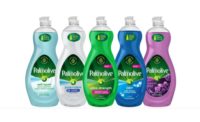Procter & Gamble launches 100% recycled plastic and ocean plastic bottle

The Procter & Gamble Company just launched the Fairy Ocean Plastic bottle made completely from post-consumer recycled (PCR) plastic and ocean plastic. The launch of the bottle aims to raise awareness of the issue of ocean plastic and what can be done to prevent plastic waste from reaching the ocean.
The first-ever Fairy Ocean Plastic Bottle has been created in partnership with recycling expert TerraCycle and will reach British consumers in 2018. The U.K. launch will include 320,000 bottles, the largest production run of recyclable dish soap bottles in the world made using ocean plastic. The innovative bottle will be made from 10% ocean plastic, collected from the ocean and beaches around the world, and 90% post-consumer recycled plastic.
The project aims to drive awareness of the issue of ocean plastic pollution, inspire consumers to physically participate in beach clean-ups and recycle household waste.
Stemming the flow of plastic into the ocean is crucial to preserving the health of our ocean. According to the Ellen MacArthur Foundation (EMF) 95% of the value of plastic packaging material, worth $80-120 billion annually, is lost to the economy and on the current track, there could be more plastic than fish in the ocean (by weight) by 2050[1].
With the P&G Fairy Ocean Plastic bottle, and the intent to extend the initiative across other brands and regions in the future, P&G continues to leverage the power of its brands to inspire change. In an effort to divert plastic waste from landfill and the ocean, P&G brands, including Fairy, Dawn, Yes, Dreft and Joy, will continue to divert 8,000 metric tonnes of plastic from landfill for use in transparent plastic bottles, using an average of 40% Post-Consumer Recycled plastic content across 481 million of our transparent dish care bottles globally. If stacked, these bottles would be 11 times the height of Mount Everest.
[1] The Ellen MacArthur Foundation, The New Plastics Economy: Rethinking the future of plastics (2016), available at: https://www.ellenmacarthurfoundation.org/publications/the-new-plastics-economy-rethinking-the-future-of-plastics
Looking for a reprint of this article?
From high-res PDFs to custom plaques, order your copy today!




